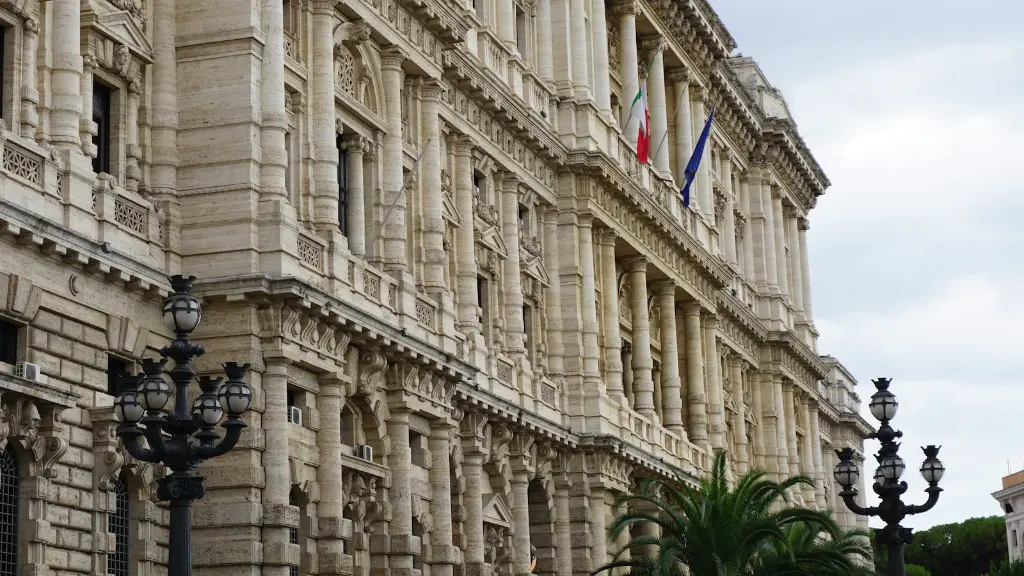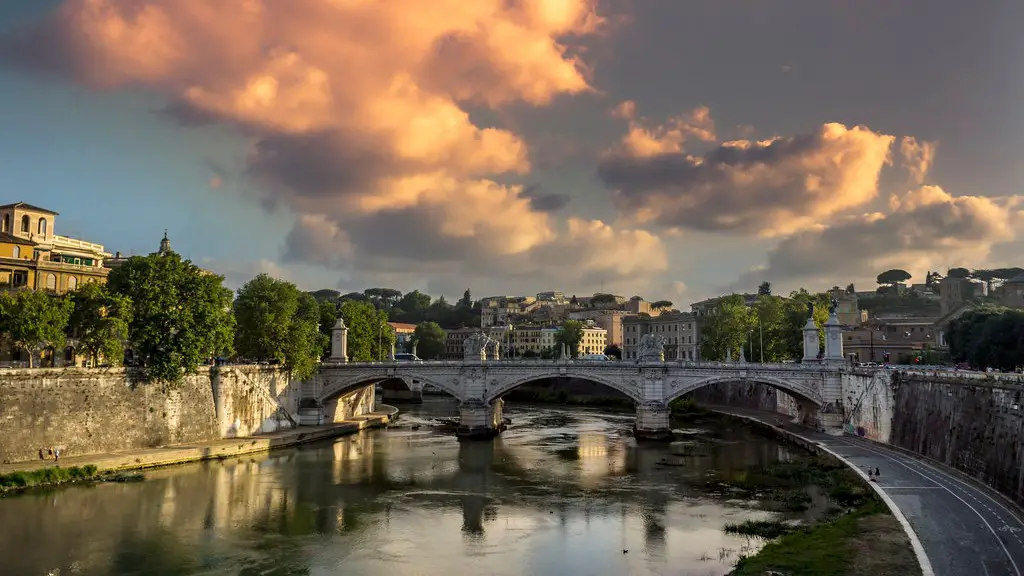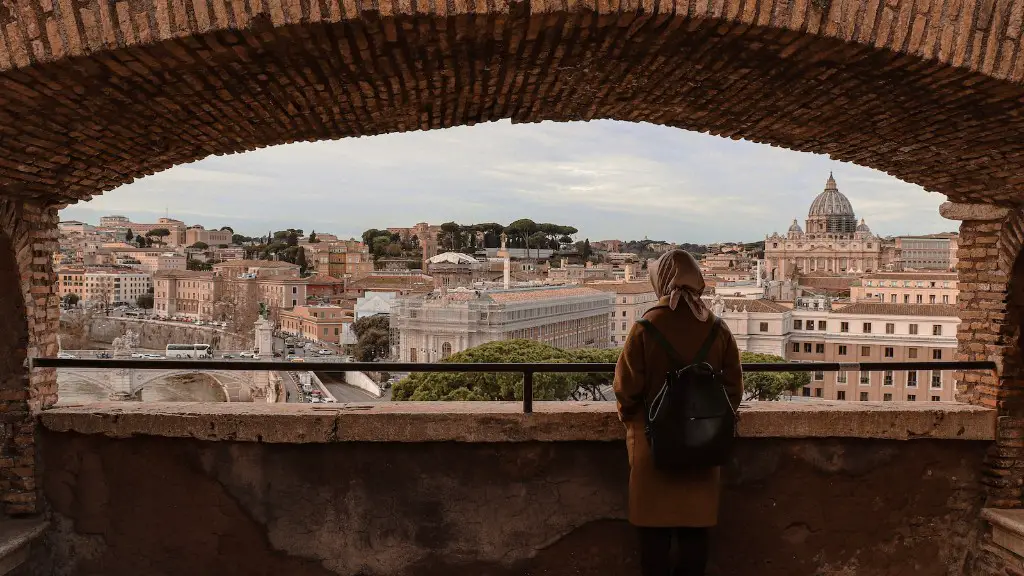A day in ancient Rome would have been a very different experience than a day in Rome today. For one, there would have been a lot more people! The city of Rome was once the largest in the world, with a population of over one million people. ancient Rome was also a very dirty and smelly place, with open sewers and narrow, crowded streets. Despite all of this, ancient Rome was a beautiful and fascinating place. The buildings were made of marble and decorated with intricate sculptures. The city was full of temples, public baths, and other grand public buildings. And of course, there were the famous Roman ruins, which are still a huge tourist attraction today. If you could go back in time and spend a day in ancient Rome, it would definitely be a day to remember!
A day in ancient Rome may have consisted of waking up and eating breakfast with the family, then going off to work or school. After a day of learning or labor, one would return home for dinner and some leisure time. Bedtime would come early, since most houses in Rome did not have indoor plumbing, and thus people would retire to their beds for the night.
How long was the day in ancient Rome?
The ancient Romans used a 12-hour clock for both daytime and nighttime. The first daylight hour began at sunrise, and the last hour ended at sunset. The 12 hours in between were divided evenly into day-hours and night-hours. Noon was the sixth hour of the day, and midnight was the sixth hour of the night.
The wealthy class in ancient Rome lived a life of luxury, complete with expensive furnishings and plenty of servants to cater to their every need. They would often host lavish dinner parties, serving their guests exotic dishes that the average person could only dream of tasting. In contrast, the poorer class Romans could only imagine what it was like to live such a life of luxury.
What was daily life like in ancient Rome for the poor
In ancient Rome, the lives of rich and poor people were very different. The rich lived in the cleanest, quietest, most spacious parts of the city. Their houses were well constructed, with plenty of heat, water, and kitchens. The poor, on the other hand, lived in the dirtiest, noisiest, most crowded parts of the city. Their houses were poorly constructed, and often lacked heat, water, and kitchens.
The social life of women in ancient Rome was limited as they could not vote or hold office and were expected to spend most of their time in the house tending to the needs of the husband and children. This left little time or opportunity for socializing with other women. However, there were some women who did have some social prominence, such as the Vestal Virgins, who were high-ranking priestesses, or women who had inherited a fortune from their family. In general, though, the social life of women in ancient Rome was quite restricted.
What time did Romans wake up?
The Roman day was divided into two parts: the daytime and the nighttime. The daytime was for work, and the nighttime was for leisure. Romans would wake up before dawn and finish work by noon. Then, they would spend the afternoons pursuing leisurely activities like swimming and exercising. At sundown, Romans would get together for elaborate dinner parties that often went on until late in the evening.
This is an interesting finding, as it seems to suggest that humans are naturally inclined to sleep in patterns that are in sync with the natural light cycle. This could have implications for our modern lifestyles, which often involve artificial lighting and irregular sleep patterns. It may be worth investigating whether there is a link between insomnia and exposure to artificial light.
What did Romans do for fun?
The ancient Romans sure knew how to have a good time! State-sponsored games and spectacles were a big part of their culture, with something to suit everyone’s taste. From theatrical performances and dances to chariot races and gladiator combats, there was always something to see and do. And the best part was that most of these events were free to attend!
The average Roman ate three meals a day. The first meal, ientaculum, was eaten around dawn. This meal was generally light, consisting of bread or a wheat pancake, dates, and honey. The second meal, prandium, was eaten around noon. This meal was also light, and typically consisted of fish, cold meat, bread, and vegetables. The third meal, cena, was the largest and most important meal of the day. It was eaten in the evening, and often consisted of leftovers from the prandium.
How did people live in ancient Rome
Most people in the cities of Ancient Rome lived in apartments called insulae. The wealthy lived in single family homes called domus of various sizes depending on how rich they were. The vast majority of the people living in Roman cities lived in cramped apartment buildings called insulae.
Roman cities were divided into two groups: the wealthy and the poor. The wealthy had access to slaves that would do things such as heat their water, serve them food, and educate their children. The poor did not have these luxuries and had to fend for themselves. While the city was a mixture of both wealth and poverty, the wealthy always had the upper hand.
What was average life like in ancient Rome?
Despite the riches of the Roman Empire, the largest class lived in what can only be described as poverty. The average citizen worked hard and lived reasonably comfortably in modest housing. Roman children wore pendants called bullas, from the Latin word for “bubble,” around their necks.
The homeless population in Rome was quite sizable and slept in various places throughout the city. Some slept under the stairs of apartment buildings, while others slept between the columns of porticoes or along the Tiber River. While the city of Rome was very wealthy, the homeless population was still able to find places to sleep.
At what age did girls get married in ancient Rome
The legal age for marriage was 12 for girls and 14 for boys. However, most Roman women married in their late teens to early twenties. Noble women tended to marry younger than those of the lower classes. An aristocratic girl was expected to be a virgin until her first marriage.
It was not until the late Roman Republic that women began to gain some independence. Prior to that, they were highly dependent on their fathers or husbands. Roman law stated that a woman could not own property or control her own finances. All family inheritances and dowries were transferred to the husband when a woman married. Women also could not participate in politics. They could neither vote nor run for political office. In the late Roman Republic, some women began to gain more independence, but it was not until the empire that they truly began to have equality with men.
What was the average age for a Roman girl to marry?
Although twelve may seem like an young age to be sexually active, ancient doctors such as Soranus warned against the dangers of women becoming sexually active at this age. Most Roman women appear to have married later, from about 15 to 20. However, this does not mean that all Roman women waited until marriage to have sex. Some women may have had sex before marriage, either through choice or through circumstances beyond their control.
If you want to say hello in ancient Rome, it would be enough to say Salvē (in case of one recipient) or Salvēte, if we would welcome a larger group of people. Naturally, you could also use the word Avē. Avē and Salvē can simply be translated as “Hi”.
Conclusion
Assuming you would like a description of a day in the life of an average Roman:
The day would begin with going to the public baths. This was a place where people went to wash and catch up on the latest gossip. After the baths, they would eat breakfast, which was usually bread dipped in wine. Then, they would head off to work or school.
Lunch was the next big meal of the day, and it was eaten around noon. This was usually a light meal, such as vegetables or fruit. After lunch, people would take a nap or go back to work.
The final meal of the day was eaten in the evening, and it was the largest meal of the day. This would often consist of meat, vegetables, and more bread and wine. After dinner, people would often go for a walk or to the theatre.
It is clear that a day in ancient Rome was very different from a day in modern times. The ancient Romans had a much more relaxed attitude towards time, and their day was structured around a series of ceremonies and events which were designed to make their lives more enjoyable. This is in contrast to our modern day, which is much more focused on work and productivity. It is interesting to see how different cultures approach the concept of time, and it is clear that the ancient Romans had a much more holistic view of life.





